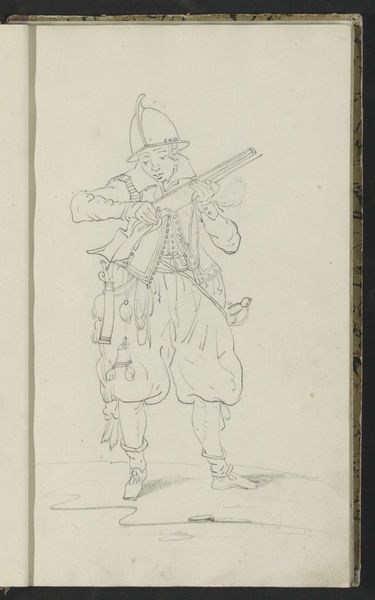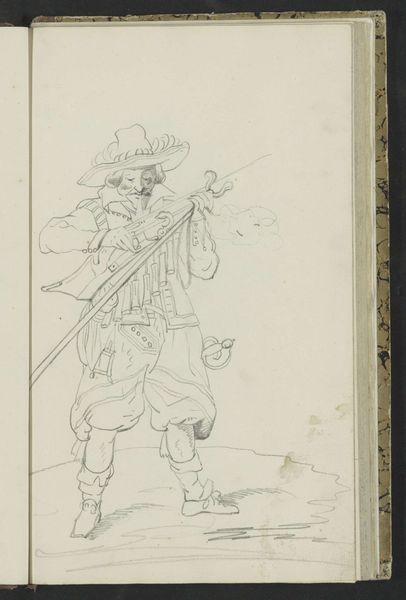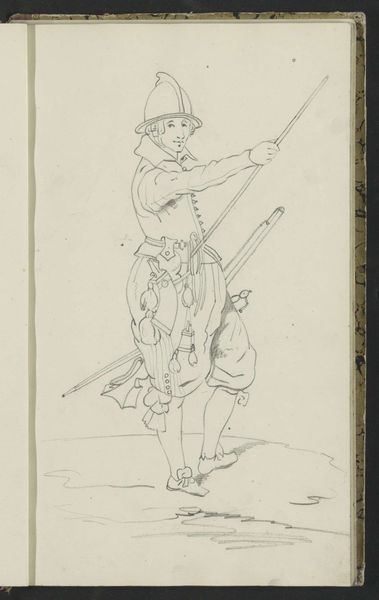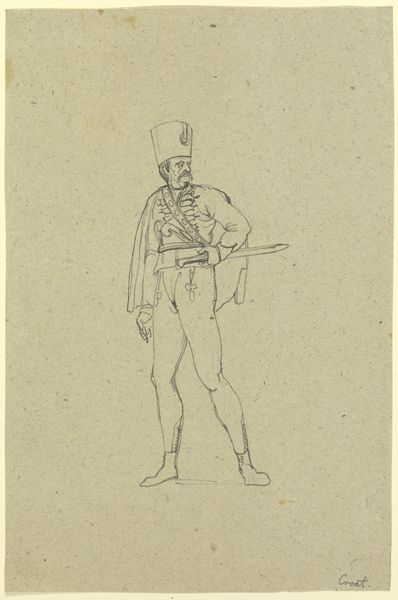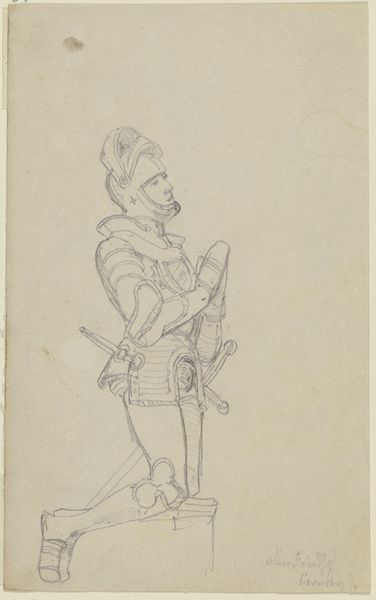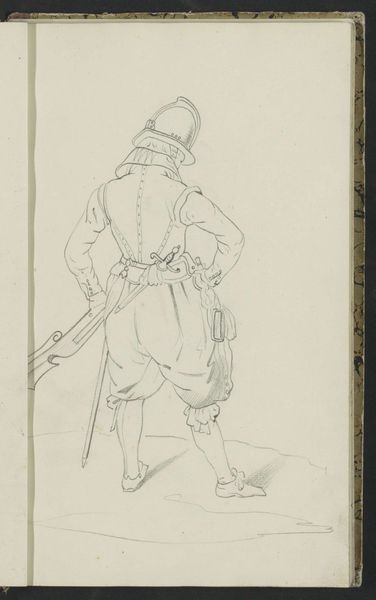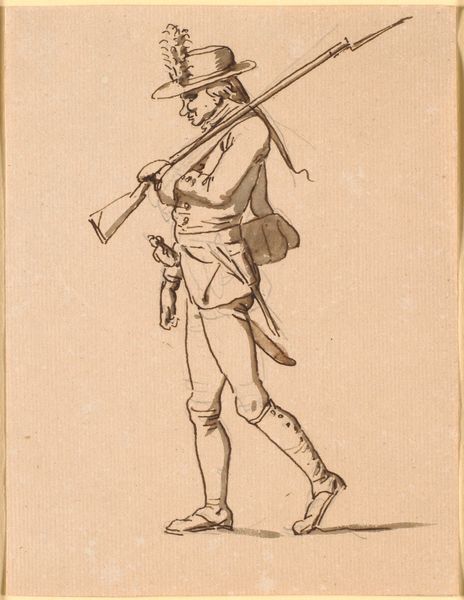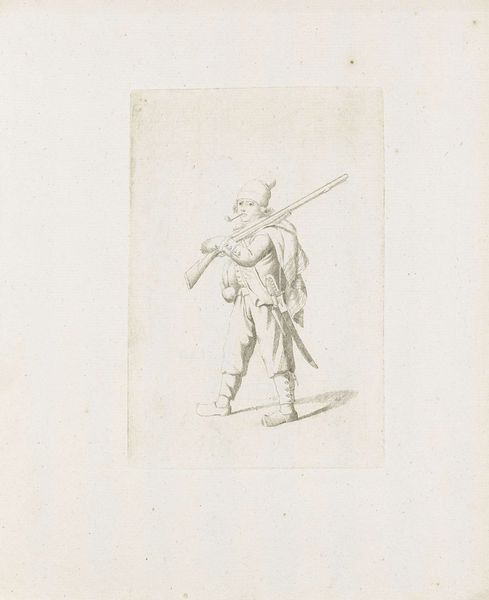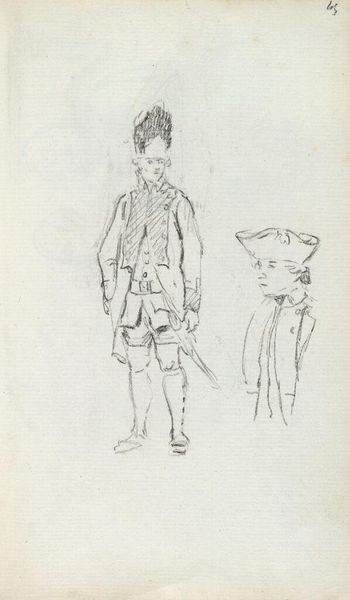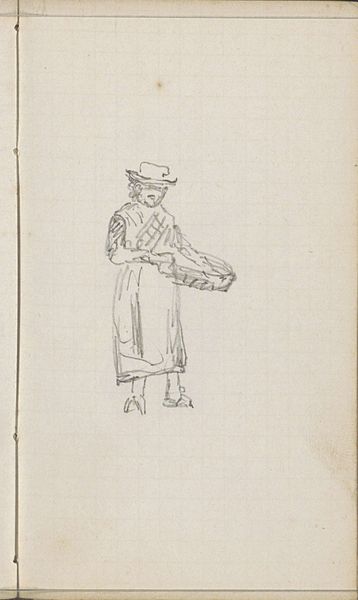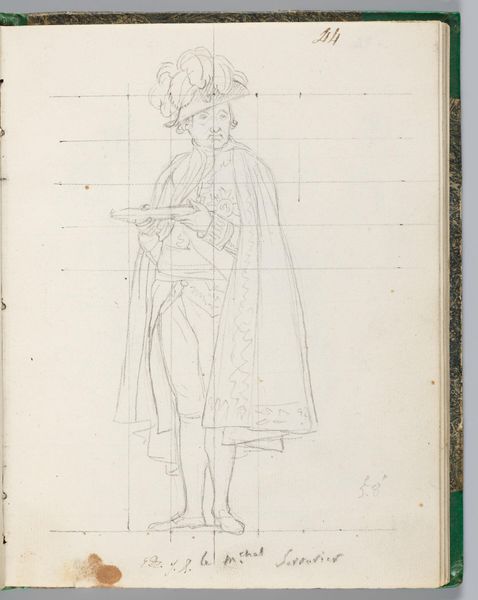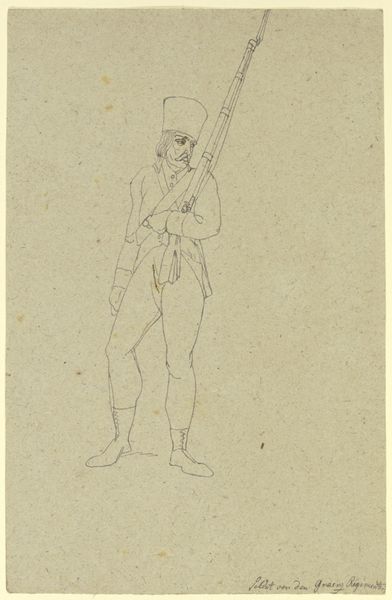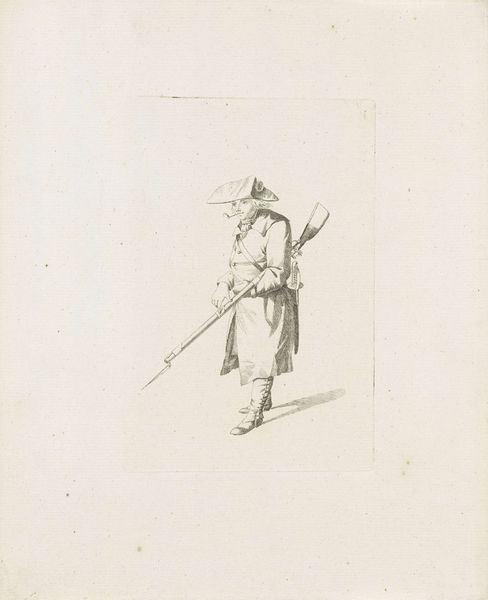![Pierrot [p. 49] by Max Beckmann](/_next/image?url=https%3A%2F%2Fd2w8kbdekdi1gv.cloudfront.net%2FeyJidWNrZXQiOiAiYXJ0ZXJhLWltYWdlcy1idWNrZXQiLCAia2V5IjogImFydHdvcmtzLzUyY2U1NmQyLTRmMzctNGIzMy04ZThkLWM1NmRkOTMyZmMzYi81MmNlNTZkMi00ZjM3LTRiMzMtOGU4ZC1jNTZkZDkzMmZjM2JfZnVsbC5qcGciLCAiZWRpdHMiOiB7InJlc2l6ZSI6IHsid2lkdGgiOiAxOTIwLCAiaGVpZ2h0IjogMTkyMCwgImZpdCI6ICJpbnNpZGUifX19&w=828&q=75)
drawing, pencil
#
portrait
#
drawing
#
figuration
#
pencil
#
expressionism
Dimensions: overall: 16.2 x 10 cm (6 3/8 x 3 15/16 in.)
Copyright: National Gallery of Art: CC0 1.0
Editor: This is a pencil drawing titled "Pierrot" by Max Beckmann. The figure seems so fragile, like it could disappear any moment. How do you interpret this work? Curator: It is evocative, isn't it? Beckmann's "Pierrot" invites us to consider the complexities of identity. The Pierrot figure, traditionally a character of commedia dell'arte, often embodies themes of alienation, longing, and the mask we present to the world. What does that history, that inherent performativity, mean in the context of Expressionism in a Germany wrestling with its identity between the wars? Editor: I see what you mean. There’s a sadness there, despite the costume. The figure seems vulnerable, stripped bare, which makes you think about who they are underneath all the fancy dress. Curator: Precisely. And consider Beckmann’s own biography. A veteran of World War I, he experienced firsthand the trauma and disillusionment of a society in crisis. Could this Pierrot be a self-portrait, a reflection on the artist's own experience of societal fragmentation? Is the mask, therefore, protection? Editor: That's a powerful connection. It reframes the image; the fragility feels more like a guarded sensitivity now. Curator: Consider how this fragile Pierrot challenges conventional notions of masculinity and heroism in that era. Is it a symbol of resistance? Editor: That's a perspective I hadn’t considered before. It's a potent reminder of how personal and political these artworks can be. Curator: It certainly makes you question your own gaze. So much here is hidden in plain sight. Editor: Thanks for helping me look at the piece with a completely different understanding, so valuable!
Comments
No comments
Be the first to comment and join the conversation on the ultimate creative platform.
